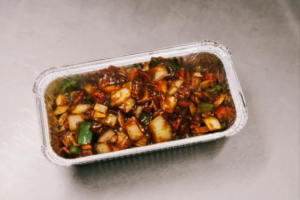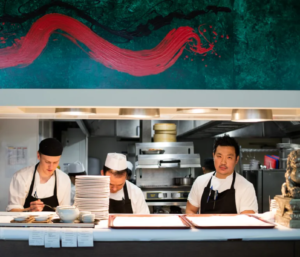1986 London’s first major Chinese factory, Seawoo, sourced from suppliers around the world (a symbol of Oriental food culture and the voice of Asian cuisine in UK)
1970 Chinese cooking becomes popular
https://www.britishchineseheritagecentre.org.uk/zh_cn/ph/timeline/british_chinese_workforce.html
How the British-Chinese takeaway took off
According to Gregor Benton and Edmund Terence Gomez in their book The Chinese in Britain, 1800-Present, at the start of the 1950s, there were just 36 Chinese restaurants in the UK but, in competition with the new fast-food chains, Chinese takeaways sprang up all over the country in the 1970s and 1980s.
By 1971, they were opening at the rate of three a week; by the late 1990s, they numbered about 5,000 nationally. In just two decades,the Chinese takeaway had become a British institution. The food on offer was far removed from what Chinese people ate themselves: there were no broths, bones or shells, few vegetables and far too much deep-frying. With no access to fresh Chinese produce, takeaways relied on tinned bamboo shoots and water chestnuts, as well as beansprouts grown from dried mung beans. Fresh peppers and onions offered the requisite crunch; flavours were childishly appealing. The formula, loosely based on Cantonese cooking but simplified for western tastes and modest budgets, had been pioneered by Chinese immigrants in America. It was the only Chinese food most British people ever ate. Despite its almost total lack of authenticity, it was a wild success.

By 2001, according to a report by Market Intelligence, Chinese was the British people’s favourite foreign food. Half a century after it first conquered British palates, the “traditional” British Chinese takeaway has been drowned out by the clamour of other cuisines and a new wave of more authentic Chinese specialities. Most of the elder generation of Cantonese chefs have retired, their locally born children leaving behind the rattle of ladles in woks and the hiss of steam. Supermarket Chinese ready meals, often featuring favourite takeaway dishes, have encroached on the old takeaway market.

The earliest immigrants from Hong Kong were in the heart of London’s West End entertainment district and Chinatown. A great gift to the British people: countless Cantonese restaurants [serving regional Hong Kong cuisine].
In recent years, authentic Chinese cuisine has also evolved considerably. Once hard-to-find Chinese ingredients have also become staples on supermarket shelves, and the range of regional Chinese restaurants from Sichuan to Muslim Xian cuisine continues to expand. As a result the Chinese food industry is also facing competition.

“Cuisine is a cultural construct. Cuisine has always evolved and always needed to be innovative, and today Chinese cuisine has long combined and innovated with all sorts of things.

https://www.ft.com/content/d94c22f6-90e2-4bda-b5a0-5f89e565b1c3
https://www.britishchineseheritagecentre.org.uk/zh_cn/ph/timeline/british_chinese_food.html


Leave a Reply